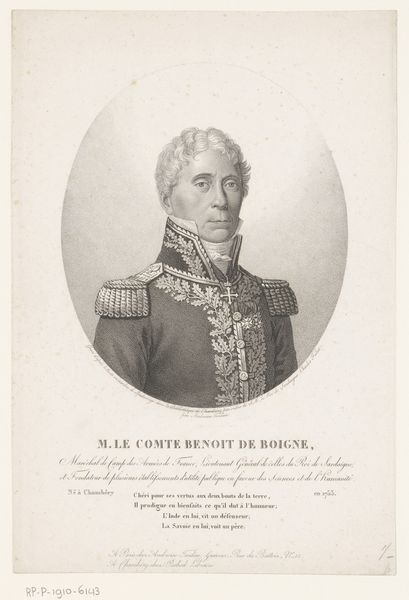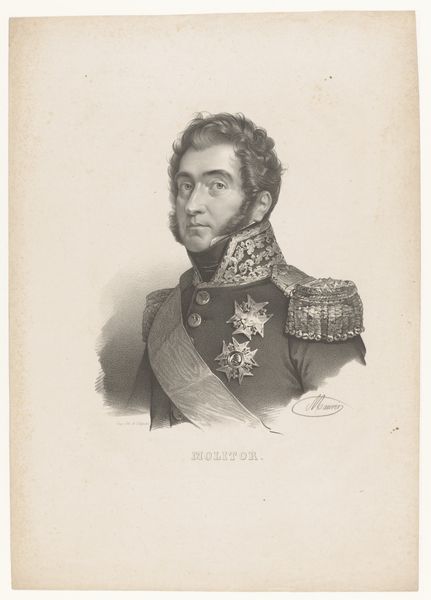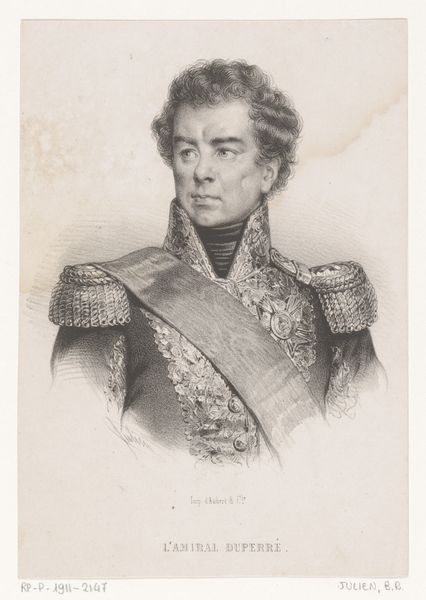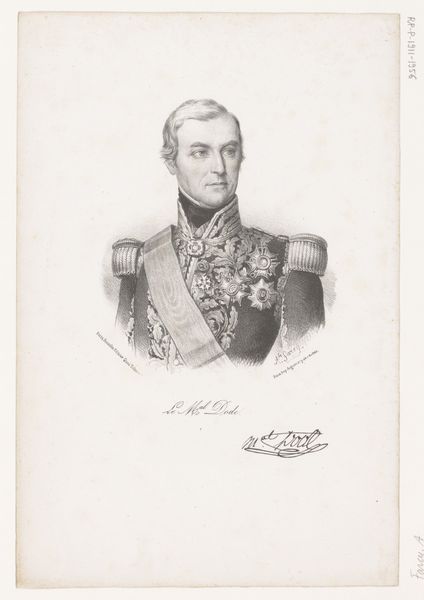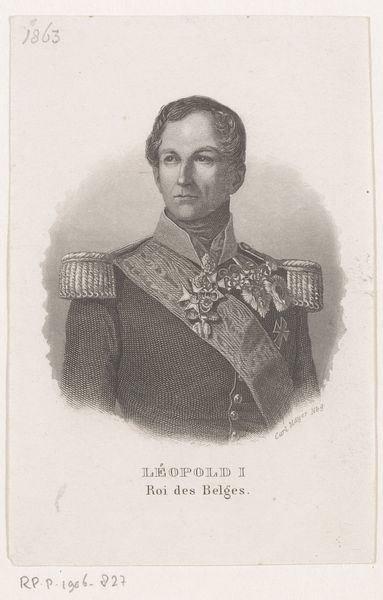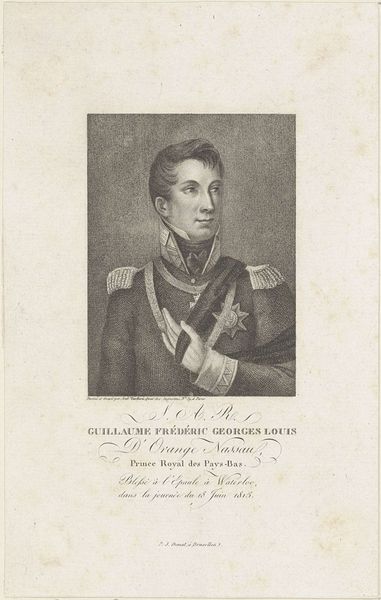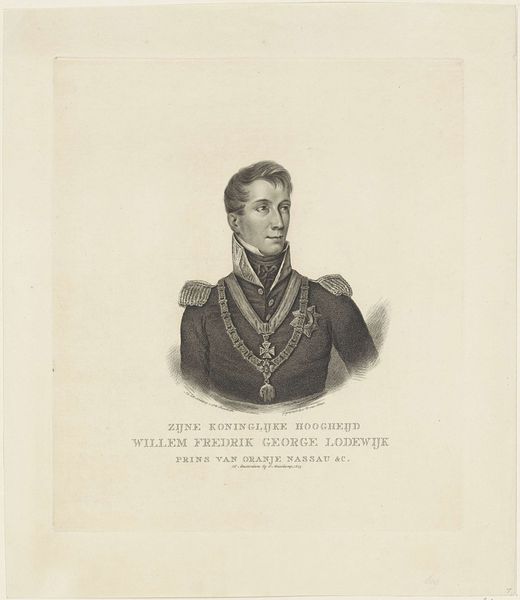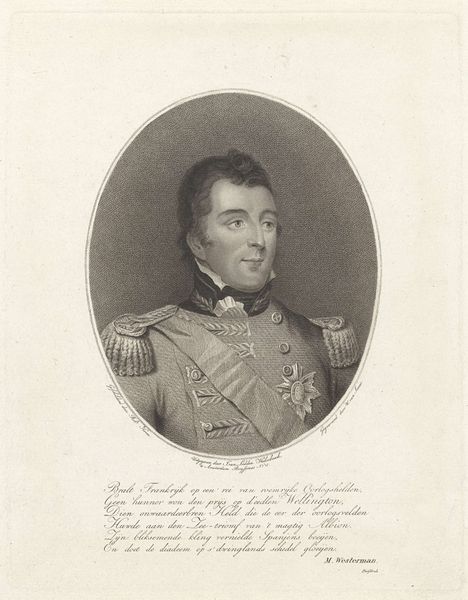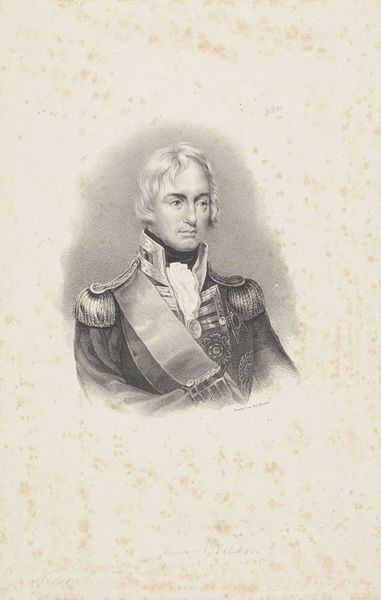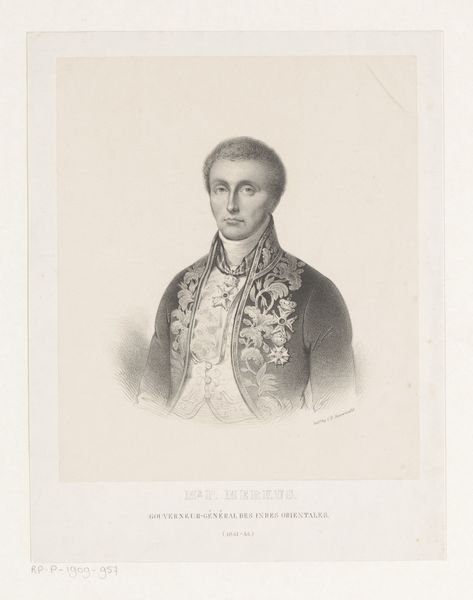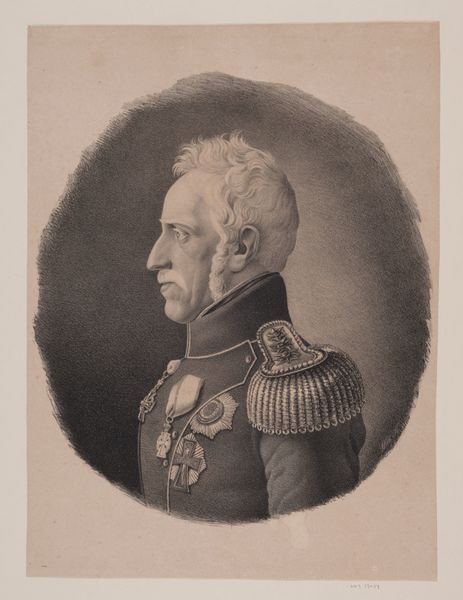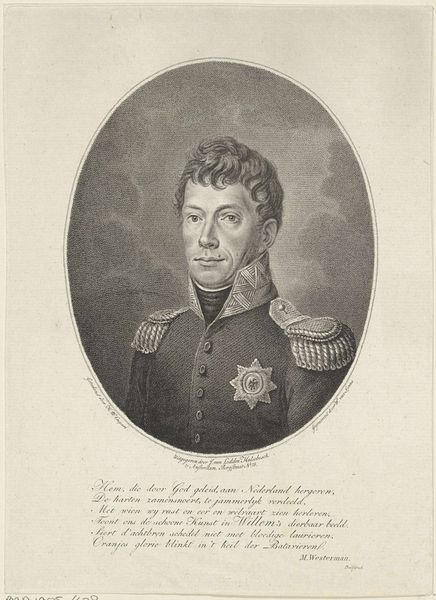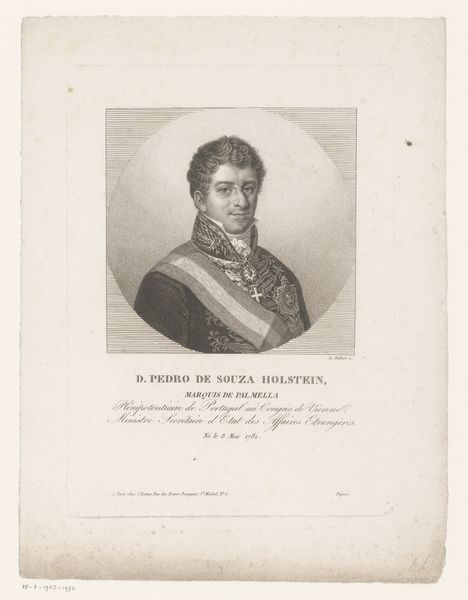
print, engraving
#
portrait
#
neoclacissism
# print
#
charcoal drawing
#
19th century
#
portrait drawing
#
history-painting
#
engraving
Copyright: Public domain
Editor: This is a print depicting Manuel Inácio Martins Pamplona Corte Real, Count of Subserra. I’m estimating it to be from the 19th century. It’s a very formal portrait… quite austere. I’m interested in learning more about its creation as a printed object. What strikes you most about this particular piece? Curator: It’s fascinating to consider how this print democratizes access to the image of power. The engraving process itself is key. We see here how reproductive technologies can circulate status. How do you think the subject, bedecked in signifiers of rank, influences its reception? Editor: Well, all those decorations... It almost seems like a deliberate attempt to highlight his authority, a construction of power. Was it typical to have such detailed engravings at the time, almost a fetishization of rank through material representation? Curator: Exactly! The artistry, the labor involved in meticulously rendering these details – the embroidery, the medals – elevates the subject. But consider the inherent contradiction: a mechanically reproduced image of exclusivity. Doesn’t this impact the reading of the portrayed sitter? Editor: That’s a great point. It both celebrates and potentially undermines his elite status through its wider distribution. It raises questions about access, privilege and even perhaps about the very meaning of ‘status’ in a rapidly changing world. Curator: Precisely. This print, then, becomes a material document reflecting the complex social dynamics of the period, revealing anxieties about status, and shifts in production and consumption. Editor: I see that now. It’s much more than just a portrait; it's an object deeply embedded in the social and economic fabric of its time. Thanks for the insightful explanation. Curator: My pleasure. Reflecting on how prints can act as barometers of shifting social forces is, in itself, revealing.
Comments
No comments
Be the first to comment and join the conversation on the ultimate creative platform.
